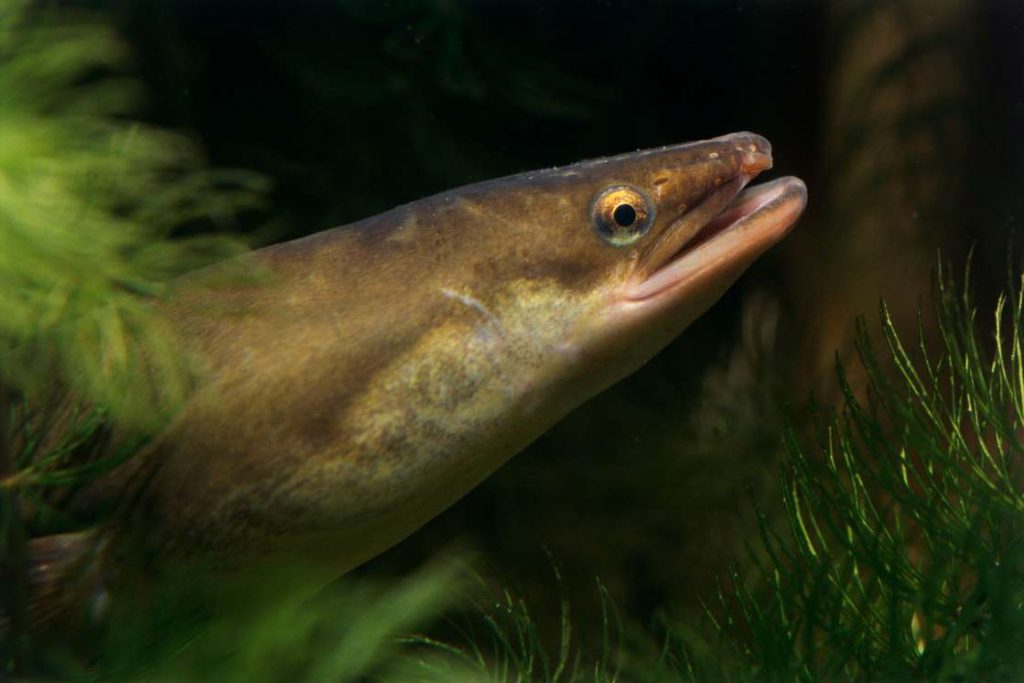Critically endangered eels hyped up on cocaine could have trouble making a 3,700-mile trip to mate and reproduce—new research warns.

And while societies have long grappled with ways to cope with the use of illicit drugs, less understood are the downstream effects these drugs might have on other species after they enter the aquatic environment through wastewater.
So, in the name of research, scientists pushed cocaine on European eels in labs for 50 days in a row, in an effort to monitor the effects of the experience on the fish.
European eels have complex life patterns, spending 15 to 20 years in fresh or brackish water in European waterways before crossing the Atlantic Ocean to spawn in the Sargasso Sea just east of the Caribbean and the U.S. Eastern Seaboard. While the eels are also farmed for food, the wild population is considered critically endangered by the International Union for Conservation of Nature due to dams and other waterway changes that block their migrations, overfishing, and different types of water pollution.
The eels are vulnerable to trace concentrations of cocaine, particularly in their early lives, according to the researchers of a study published in Science of the Total Environment.
“Data show a great presence of illicit drugs and their metabolites in surface waters worldwide,” says Anna Capaldo, a research biologist at the University of Naples Federico II and the lead author of the study. She adds that water near densely populated cities is even worse, with some research showing particularly high concentrations in the Thames River near London’s Houses of Parliament and in the Italian Amo River near Pisa of leaning tower fame.
Administering a Drug Test
Capaldo and her colleagues put eels into water with very small levels of cocaine—about the same as that found in some rivers. They found the eels appeared hyperactive but showed the same general health as drug-free eels. But their bodies told a different story.
They found the drug accumulates in the brain, muscles, gills, skin, and other tissues of the eels. The muscle of the fish also showed swelling and even breakdowns, and the hormones that regulate their physiology changed. These problems were even around after an enforced 10-day rehab period in which the researchers removed the eels from water with cocaine.
“All the main functions of these animals could be altered,” Capaldo says.
Particularly concerning is that cocaine increases cortisol levels, a stress hormone that induces fat consumption. The trouble is European eels need to build up fat before their migration to the Sargasso Sea to breed, and higher levels of cortisol could delay the timing of this journey.
She also notes that increased dopamine levels the eels experienced on cocaine could also stop them from reaching sexual maturity. “It is likely that in this condition, the reproduction of the eels could be impaired.”
On top of this, the muscle swelling or breakdown could impair the eels’ ability to even reach the Sargasso Sea.
Emma Rosi, a senior scientist at the Cary Institute of Ecosystem Studies who was not involved in the recent study, says that Capaldo and her colleagues used environmentally relevant concentrations of cocaine in their research.
She says that in cases where drugs are involved, it might take a much higher concentration to kill organisms, but even low concentrations can still have an effect—especially in terms of things like predator-prey interactions.
Rosi has studied the effects of antidepressants including Prozac and amphetamines on aquatic ecosystems, finding they change the bacterial or algal communities in water, and can affect the growth rate and life cycles of insects.
According to Capaldo, illicit drugs like cocaine are only part of the problem. These waters also contain residues from other illicit drugs, heavy metals, antibiotics, and pesticides. “We don’t know the possible consequences of such combinations of substances, but clearly they could influence the survival and/or the health status of the eels,” she says, adding that other species besides eels could experience similar body changes when exposed to cocaine.
Drug Treatment
Capaldo says that the problem could be solved by more efficient wastewater treatment, or people avoiding illicit drugs.
Daniel Snow, the director of the Water Sciences Laboratory at the University of Nebraska, who was not involved in this research, is skeptical the problem will be solved by stopping illicit drug use.
“If that was the solution, then laws would actually stop use. There is no evidence that laws actually do control use,” he says.
Snow, who has studied the effect of drugs and other pollutants on aquatic life before, does hope research like Capaldo’s catches enough attention that people start thinking more about the consequences of things. But according to him, the solution might more likely come from engineering.
“You can basically treat anything to any degree of purity, it’s just about how much money you want to put into the treatment process.”












I don’t watch Alex Jones Channel anymore recently. He is an asset of CIA. But sometimes, he is funny and interesting. When I asked “There is some kind of powder on US dollar bills. What is it?” on the comment, then I got an answer right away from a stuff, if not Alex Jones, “That is cocaine. Cocaine is purposefully powdered on US dollar bills”. What interesting about his Youtube Channel is when I write a comment on his video, quite often get his answer or opinion to my comment including many kinds of CIA operations.